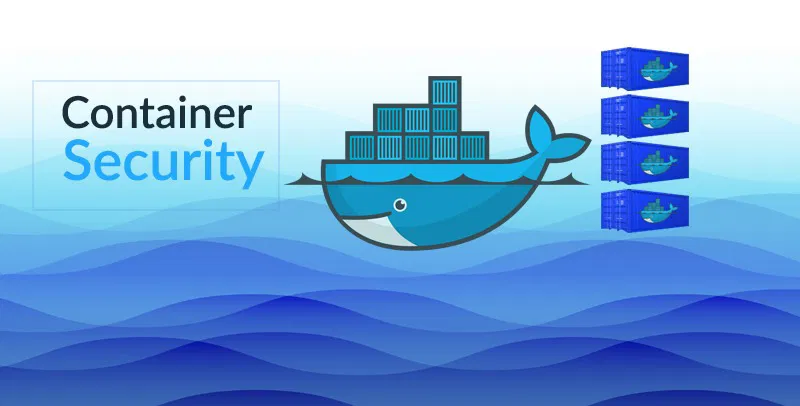Mastering Container Security (Real-Practical Steps for Building Safer, Resilient Workloads)
 Tanishka Marrott
Tanishka Marrott
Containerized environments have taken over modern infrastructure, but with great convenience comes even greater security risks. Let’s face it, securing containers isn’t optional—it’s mandatory. And if you’re still deploying containers without giving security a second thought, this post is for you.
Today, I’ll walk you through container security best practices—covering everything from minimizing the attack surface to enforcing non-root users and automated security checks in your pipelines. Let’s get started!
1. Start Small—Minimize the Attack Surface
The first rule of thumb? Use minimal base images. Why bloat your containers with unnecessary packages and libraries? Less is more when it comes to security. A slim base image like Alpine Linux trims the fat and ensures you’re shipping only what’s needed.
FROM alpine:3.13
This is your starting point—lightweight, secure, and reliable. Start small and you’ll immediately reduce the attack surface for malicious actors.
2. Never Run Containers as Root!
We’ve all been there. Running containers as root is convenient, but also dangerous. Here’s a quick fix—use non-root users to mitigate the risk of privilege escalation attacks. Let’s break this down with an example.
# Create a non-root user
RUN addgroup -S appgroup && adduser -S appuser -G appgroup
USER appuser
Running containers as non-root means fewer privileges for an attacker to exploit if they gain access to your system.
3. AppArmor & SELinux for Advanced Security
AppArmor and SELinux allow you to control what containers can and can’t do. Use AppArmor profiles to restrict capabilities such as network access or file system modifications. Meanwhile, SELinux policies can help you enforce even more granular access controls.
Example AppArmor profile snippet:
deny network,
audit read, /etc/** rw,
SELinux example:
allow container_t sensitive_dir_t:dir { read open };
These tools provide another layer of protection, restricting containers’ interactions with the system, making them less vulnerable to attacks.
4. Automate Vulnerability Scanning with Trivy
Integrating security into your CI/CD pipeline ensures that you catch vulnerabilities before they hit production. Trivy is a fantastic open-source tool to automate vulnerability scanning for container images.
name: Trivy Scan
on: [push]
jobs:
scan:
runs-on: ubuntu-latest
steps:
- name: Run Trivy
run: docker run --rm -v /var/run/docker.sock:/var/run/docker.sock aquasec/trivy image my-app-image
With every code push, you’re validating the security of your containers, keeping vulnerabilities in check.
5. Kubernetes Security Context: Your Best Friend
In Kubernetes, use securityContext to ensure your pods are deployed with the least privilege.
securityContext:
runAsUser: 1000
readOnlyRootFilesystem: true
allowPrivilegeEscalation: false
This enforces non-root users, ensures the root filesystem is read-only, and prevents privilege escalation within the container.
6. Network Policies: Lockdown Container Communication
Inter-container communication can be risky. Kubernetes Network Policies help you limit which containers can talk to each other.
apiVersion: networking.k8s.io/v1
kind: NetworkPolicy
metadata:
name: restrict-pod-communication
spec:
podSelector:
matchLabels:
role: frontend
policyTypes:
- Ingress
ingress:
- from:
- podSelector:
matchLabels:
role: backend
Only allow what’s necessary—this limits the lateral movement of attackers in your environment.
7. Regularly Update Your Images
Security doesn’t end once your container is deployed. Regularly updating your container images to include the latest security patches is essential. Automate this process in your pipelines and ensure you have updated images with every deployment.
Final Thoughts:
Security should be baked into every stage of your container lifecycle—from writing the Dockerfile to deploying on Kubernetes. Start small, run as non-root, and leverage the right tools to automate vulnerability scans and access controls. Container security doesn’t have to be hard, but it does have to be continuous.
Let’s make your containers secure, one step at a time.
Got questions? Reach out! Let’s secure the future together.
Subscribe to my newsletter
Read articles from Tanishka Marrott directly inside your inbox. Subscribe to the newsletter, and don't miss out.
Written by

Tanishka Marrott
Tanishka Marrott
I'm a results-oriented cloud architect passionate about designing resilient cloud solutions. I specialize in building scalable architectures that meet business needs and are agile. With a strong focus on scalability, performance, and security, I ensure solutions are adaptable. My DevSecOps foundation allows me to embed security into CI/CD pipelines, optimizing deployments for security and efficiency. At Quantiphi, I led security initiatives, boosting compliance from 65% to 90%. Expertise in data engineering, system design, serverless solutions, and real-time data analytics drives my enthusiasm for transforming ideas into impactful solutions. I'm dedicated to refining cloud infrastructures and continuously improving designs. If our goals align, feel free to message me. I'd be happy to connect!